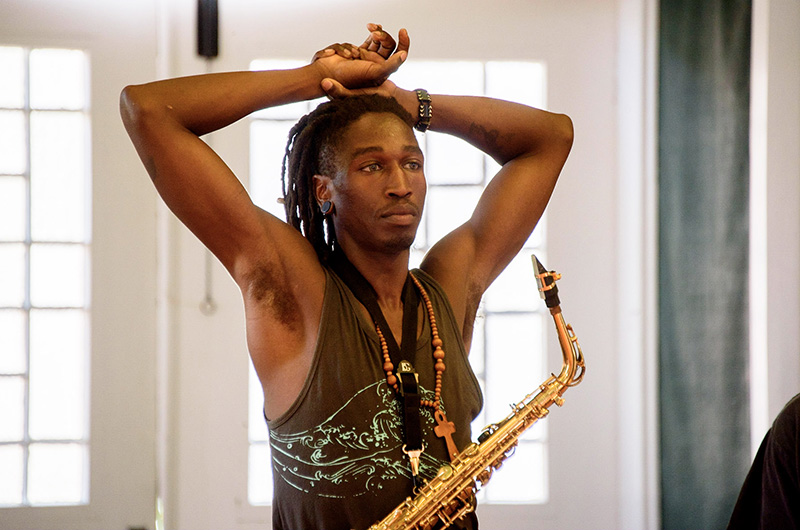Anna Myer and Jay Paris are firm believers in the power of art to inspire change.
“Art is unifying, it makes us all connect at the emotional level and that’s how change happens,” Mr. Paris said in a phone interview with the Gazette.
That belief led the couple to start Beheard.world in Boston in 2011. After separate careers at the intersection of art and activism the couple started the nonprofit, which uses filmmaking and live performance as a way to advance social justice. Ms. Myer and Mr. Paris brought a group of 11 artists to the Island last week for a film screening and performance of their work.
“There is a white and black culture here which is interesting and we like to have mixed audiences,” Ms. Myer said about why they were attracted to the Island.
The group is made up of dancers, poets and singers. They hold day jobs outside of Beheard, but they find time for the company because they care deeply about its mission, Mr. Paris said.
“They could dance in virtually any company in New England if they wanted to, but I think they choose this one because of the work we do. They all deeply care about that,” Mr. Paris said.
On Thursday evening at the Tabernacle the group hosted a screening of Invisible Imprints, a documentary by Mr. Paris which follows the group as it puts on a string of performances starting in Jackson, Miss. and ending in Chicago. The film explores America’s racial history and gives insight into the performers’ struggles with identity and race, Mr. Paris said.

“They were meeting civil rights leaders whose histories weren’t very well known and going to civil rights sites, museums and then of course performing,” Mr. Paris said. “It was really seeing all that through the eyes of these performers.”
On Saturday evening at Union Chapel the group performed Suite Talk, a collection of dance, music and spoken word which explores the ways race manifests in American society.
Charles Murrell opened the performance by walking around the perimeter of the chapel playing a solemn rendition of Cello Suite No. 1 by Johann Sebastian Bach on the saxophone. Mr. Murrell welcomed everyone and informed the audience that the performance comes on the heels of the “craziest week of his life.” Mr. Murrell was attacked by members of the white supremacist hate group Patriot Front during that group’s march through downtown Boston a few days before the Fourth of July.
Mr. Murrell — who suffered cuts to his hand and head from the attack which required stitches — said he is grateful to be surrounded by love and his fellow artists, whom he calls family, while he processes the trauma.
“All it really takes is just one person to make a difference in how you see something that you’re going through, or how you think about what it is you may be going through,” Mr. Murrell said at the performance.
Mr. Murrell’s focus on healing rather than retribution also speaks to the company’s mission, Mr. Paris said.
“For a guy like that, who could be so angry about all of this, [to say] what I really care about is how do we come together,” Mr. Paris said. “A big nod to Charles, but I do think that’s the ethos of the company.”
The show confronts racism in America head-on. The dancing contains depictions of lynching and some of the poetry is about police brutality. But there is also an intimate duet. Another dance is set to a remix of This Land is Your Land. The point is to show that America is complicated, which means loving America is too, Ms. Myer said.
“There’s a lot of violence going on...then there’s this love duet that comes in that’s about the intimacy of love and how we care for each other,” Ms. Myer said. “And then there’s This Land is Your Land...it’s an old folk song, but it’s everybody’s land...everybody belongs here.”
After the performance the audience had the chance to ask questions and share their reactions. Audience members asked about some of the technical choices and also expressed how profound they found the show.
“Our real purpose with these things is to get people to feel and then talk,” Ms. Myer said. “If you don’t get people to feel they stay in their heads instead of talking from their heart.”
To learn more about the organization and its mission, visit beheard.world.









Comments
Comment policy »